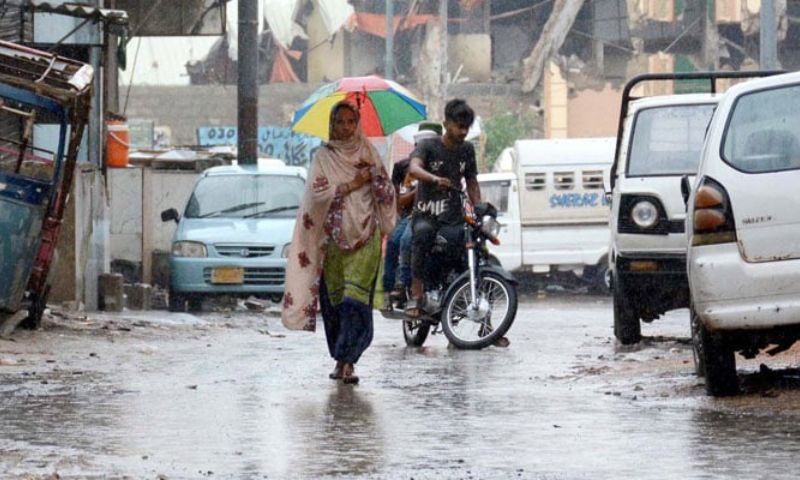ISLAMABAD: The Pakistan Meteorological Department (PMD) has predicted more rain and thunder showers from August 5, as over 300 people have died in rain-related incidents across the country during the current monsoon season.
The National Disaster Management Authority (NDMA) on Monday released updated figures on casualties and damage caused by the ongoing monsoon rains, reporting that at least 302 people have lost their lives across the country.
According to the latest data, two more fatalities were recorded in the past 24 hours—a man in Punjab and a child in Khyber Pakhtunkhwa—both killed in house collapse incidents. Additionally, 12 individuals were injured in separate rain-related incidents.
This brings the overall death toll to 302, with 727 people reported injured nationwide.
Among the deceased are 104 men, 57 women, and 141 children. The injured include 278 men, 207 women, and 242 children.
The NDMA also confirmed that the heavy rains have damaged 1,678 houses and resulted in the deaths of 428 livestock.
Meanwhile, the NDMA’s National Emergencies Operation Centre (NEOC) issued a forecast for possible flooding between August 5 and 10.
According to the advisory, a fresh westerly wave would enter from August 5, causing intensified rainfall in the upper and central regions through August 10.
Flood risk
The approaching weather system is expected to cause rising river levels, urban flooding, and localised flash floods in vulnerable regions.
Significant increases in water flow are anticipated across all major rivers, with the Jhelum and Chenab rivers particularly at risk. The River Chenab is likely to reach medium to high flood levels at Marala, Khanki, and Qadirabad, while the River Jhelum and its upstream tributaries near Mangla may also approach high flood levels.
The River Kabul at Nowshera is expected to reach low flood levels. Meanwhile, the Swat and Panjkora rivers, along with associated streams, may swell to medium levels due to continued rainfall in their catchment areas.
Currently, the barrages at Tarbela, Kalabagh, Chashma, Taunsa, and Guddu remain at low flood levels, but rising inflows and outflows could elevate them to medium flood stages in the coming days.
🚨 GLOF Alert Issued – 04 August 2025
Heavy rain may trigger glacial floods in GB & KP.
⚠️ Risk in Hunza, Skardu, Chitral & surrounding valleys.
Stay alert. Follow PMD advisories.#GLOFAlert #PMDUpdate #Monsoon2025 #PakistanWeather pic.twitter.com/htBUegXyHB— Pak Met Department محکمہ موسمیات (@pmdgov) August 4, 2025
In Gilgit-Baltistan, River Hunza and River Shigar are expected to have increased flows, with potential flash floods in their tributaries.
In Balochistan, stream networks in Musakhel, Sherani, Zhob, and Sibi districts are also likely to swell due to expected rainfall.
Tarbela Dam is currently at 90 percent of its storage capacity, while Mangla Dam holds 60 percent, with storage levels expected to rise further in the coming days.
GLOF alert
Meanwhile, the Pakistan Meteorological Department (PMD) has forecast rain, wind, and isolated thundershowers in northeastern Punjab, the Potohar region, Islamabad, upper Khyber Pakhtunkhwa, and Kashmir.
GlOF Alert (August 04, 2025)#PMD #pmdweather #GLOF #alert #Gilgit #heavyrainfall #flasflood #landslides #StormPreparedness #monsoon #StaySafeStayPrepared pic.twitter.com/6yDbhdfco9
— Pak Met Department محکمہ موسمیات (@pmdgov) August 4, 2025
Despite this, hot and very humid conditions are expected to persist across most parts of the country.
The PMD also issued an alert warning that a wet spell is likely to affect Gilgit-Baltistan and Khyber Pakhtunkhwa during the current week. This increases the risk of Glacial Lake Outburst Floods (GLOFs), flash floods, and landslides in vulnerable glaciated areas.


























